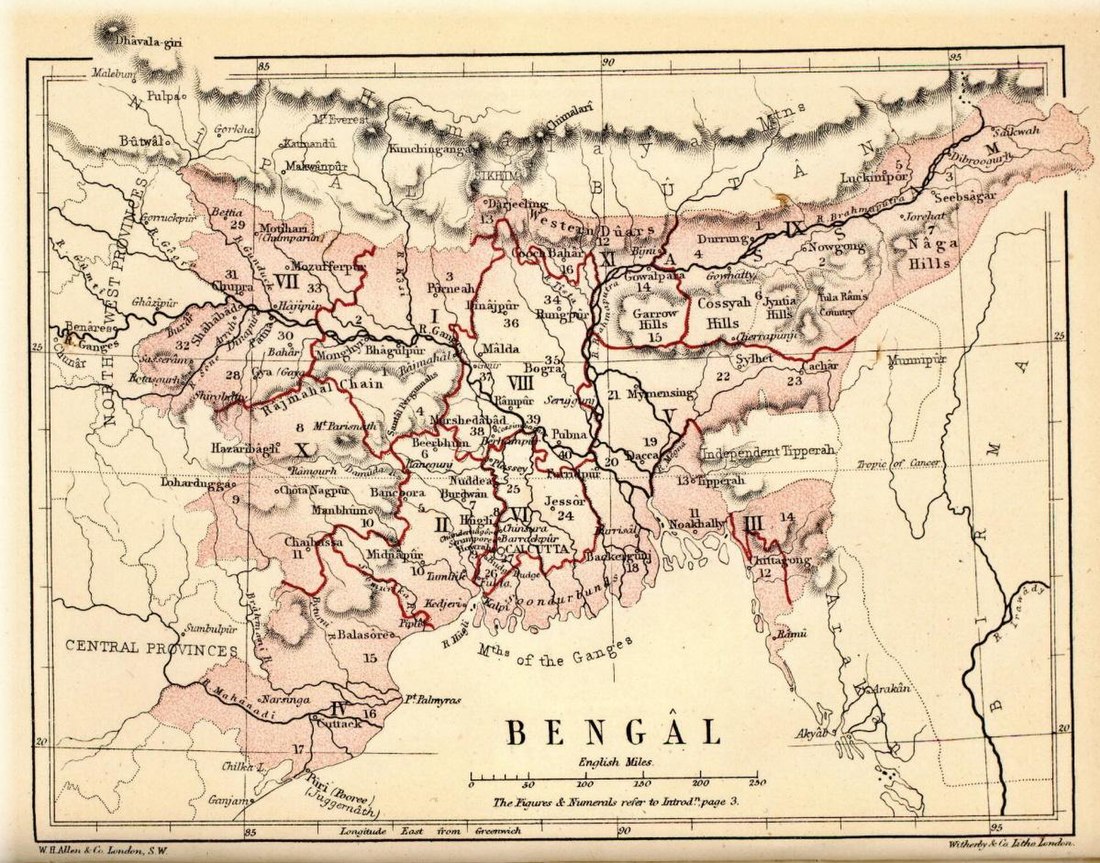Ghurid invasion of Bengal
Conquest of Bengal by the Ghurid dynasty From Wikipedia, the free encyclopedia
The Ghurid invasion of Bengal in 1202 was a military campaign of Ghurid dynasty led by Muhammad Bhakhtiyar Khalji against the Sena dynasty. Bakhtiyar Khalji emerged victorious in the campaign and subsequently annexed Nabadwip, a significant portion of the territory controlled by the Sena Dynasty. Following their defeat, Lakshmana Sena, the ruler of the Sena dynasty, retreated to the southeastern region of Bengal.[3][4][5]
| Ghurid conquest of Bengal | |||||||||
|---|---|---|---|---|---|---|---|---|---|
| Part of Indian campaigns of Muhammad of Ghor | |||||||||
| |||||||||
| Belligerents | |||||||||
| Ghurid Dynasty | Sena Dynasty | ||||||||
| Commanders and leaders | |||||||||
| Bakhtiyar Khalji | Lakshmana Sena | ||||||||
| Strength | |||||||||
| 18 horsemen[1][2] | Unknown | ||||||||
Background
Bhakhtiyar Khalji, after the successful annexation of Bihar to the Ghurid dynasty, learned about the Sena Dynasty and its illustrious ruler, Lakshmana Sena. Despite Sena's advanced age and reputation, Khalji was determined to extend his conquests further into Bengal. Upon hearing of Khalji's intent to invade Bengal, many Brahmins and traders decided to leave the Sena capital in search of safer locations. However, in a display of resilience, Lakshmana Sena chose to remain in Nadiya, ready to defend his realm.[6][7]
The siege
Bakhtiyar, leading his forces from Bihar, strategically positioned the majority of his army within a forest near the city of Nadia. it is said that he advanced so rapidly that only 18 horsemen from his army could keep up.[citation needed] Posing as horse traders, Bakhtiyar proceeded cautiously towards the palace. Upon reaching the palace, he initiated an attack on the guards, causing a significant commotion. Then Lakshmansena was taking his mid day meal.[8] The small horde entered the city unchallenged and took the emperor and his army by shock.[citation needed] This caused Lakhsmana Sena to flee with his retainers to east Bengal.[9] As Bakhtiyar took the possession of the city, his men seized several horses and elephants along with enormous wealth. In the meantime, the main army of Bakhtiyar had overcome the guards and began to plunder the city. This plunder continued for three days.[10] Bakhtiyar moved on to Lakshmanavati, which he planned to make his capital.[6][11][12]
Aftermath
Bakhtiyar Khilji left Nadia in desolation and removed his capital to Lakhnawati. Lakshmansena continued to rule in Eastern Bengal at least for three or four years after the raid on Nadia and died some time after 1205 A.D. The historical work Tabaqat-i-Nasiri states that Bang (Vanga or Eastern and Southern Bengal) was ruled by the descendants of Lakshmansena even when that work was composed.[6][13]
Further reading
The detailed account of this conquest or the expedition of Muhammad Bakhtiyar Khalji to Nadia is given in Tabaqat -i-Nasiri, an historical work, composed by Maulana Minahj-ud-din Abu Umar-i-Usman who held various high offices under the Sultans of Delhi. In 639 A.H. (1243 A.D.) he was appointed chief Qazi of the Delhi Sultanate and of the capital. Next year he proceeded to Lakhnawati and remained for two years there to get his information about the history of Bengal chronicled by him.[13]
References
Wikiwand - on
Seamless Wikipedia browsing. On steroids.
